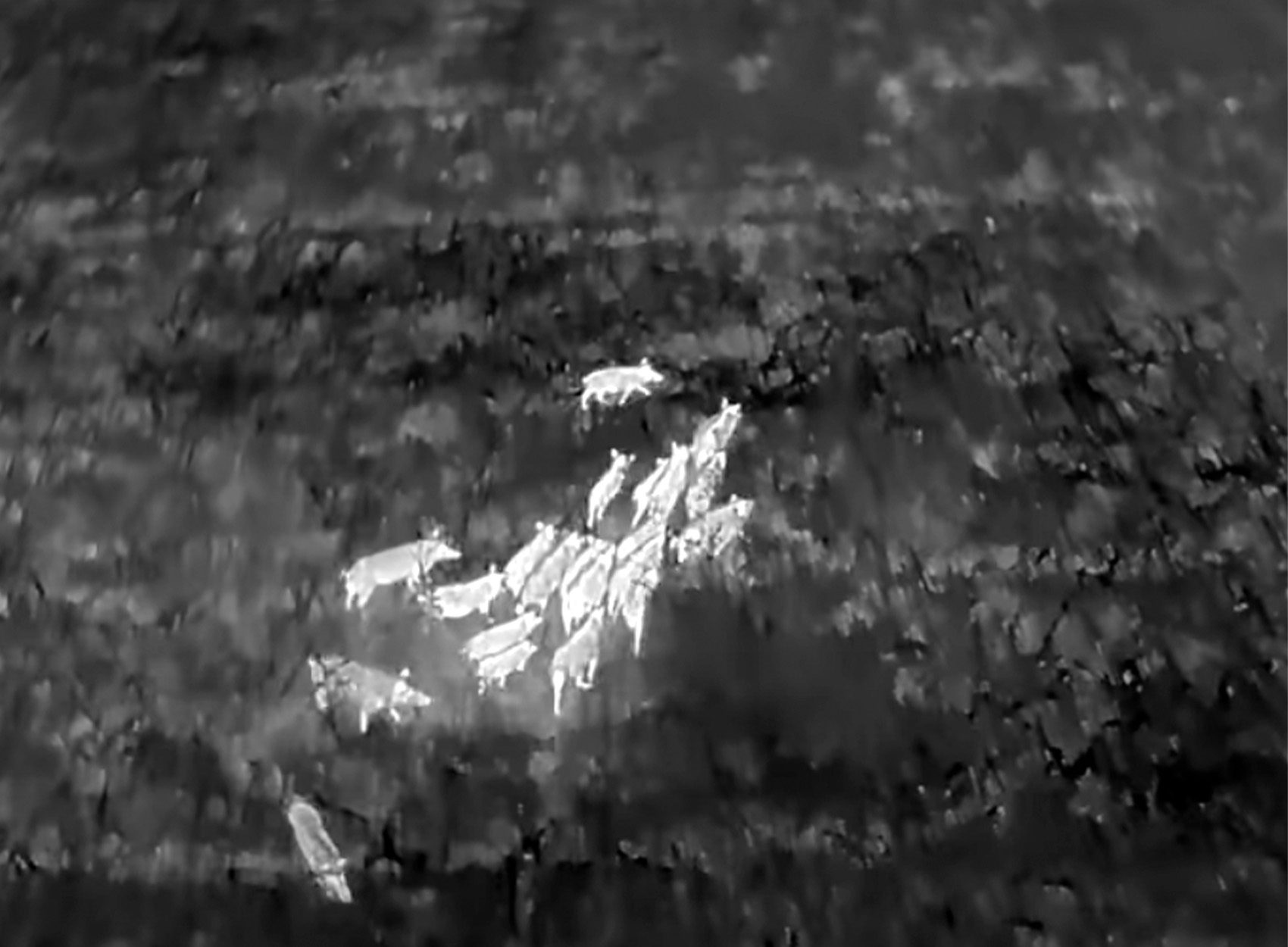Sophisticated thermal drones are already helping hunters find and kill hogs in Texas. Mississippi wants to follow suit

A drone’s eye view of a pack of hogs in Texas, which legalized hog hunting with drones in 2022. (Brazos Valley Boars and Varmints / YouTube)
Lawmakers in Mississippi are considering a proposal that would legalize the use of drones to hunt, trap, and kill wild hogs on private land year-round. It’s one of a handful of recent national efforts to address how hunters use can or cannot use drones to help locate, kill, and recover wildlife.
Also known as the “Johnny Kakales Act,” Senate Bill 2662 was introduced by State Sen. Ben Suber and referred to the Senate Wildlife, Fisheries, and Parks Committee on Feb. 19. The recently proposed bill would amend a section of the state’s legal code that regulates the take of “nuisance animals” on private land. The Mississippi Department of Wildlife, Fisheries, and Parks defines these animals as “species of wildlife, both native and non-native, [that] regularly cause conflicts through their interactions with humans.” That list includes beavers, coyotes, foxes, nutria, skunks, and wild hogs.
Current regulations allow these species to be hunted year-round on private land at any time of day or night with no weapon or caliber restrictions. Electronic calls, bait and lures, and dogs can all be used to hunt these species as well. (The only exception to the use of dogs is during spring turkey season.) The proposed amendment would only allow the use of drones for hunting and trapping wild hogs, however, and not the other five nuisance species.
The primary intent of SB-2662 is to give hunters, trappers, and land managers more high-tech tools to help reduce Mississippi’s ballooning wild pig population. Along with other Southeastern states like Texas, Georgia, Florida, and Louisiana, Mississippi is one of the worst states in the country in terms of the damage wrought by invasive swine. Wild hogs are now found in all 82 counties, where they cause an estimated $60 to $70 million annually in economic damages. This is mostly from tearing up agricultural fields and wrecking infrastructure, but hogs also compete with more valuable native species — like whitetail deer — for food and habitat.
Mississippians have been trying to eradicate these pigs for decades, and hunters harvested more than 300,000 hogs during the 2019-2020 deer season, according to the Clarion Ledger. This represents a harvest rate of roughly 60 percent, as the state’s Department of Agriculture and Commerce estimates the statewide population at around 500,000. By allowing the use of drones for hunting and trapping, state legislators hope to significantly increase this harvest rate.
This same line of thinking is what spurred Texas wildlife commissioners to approve similar regulation changes in 2022. The state now allows permitted operators to use drones fitted with thermal imaging cameras to track and locate wild hogs, which falls in line with other changes to the state’s hog hunting regs in recent years. Hog hunting from helicopters has been legal in Texas since 2011, and as of 2019, a valid hunting license is no longer required to hunt pigs on private property.
Read Next: Drones Could Revolutionize How Hunters Recover Lost Deer … If They’re Not Banned First
There’s still a larger debate around the efficacy of hunting to control feral hog populations, and studies have shown that pigs will actually disperse and breed more regularly when pressured by hunters. The Texas Parks and Wildlife Department also acknowledges that hunting “is not an effective means of large-scale population reduction.”
But for many Southeastern states grappling with out-of-control hog populations, it’s one of the only legitimate tools at their disposal. The bill that’s currently being proposed in Mississippi aims to sharpen this tool by allowing hog hunters to use new technology to spot and track hogs from the sky.
